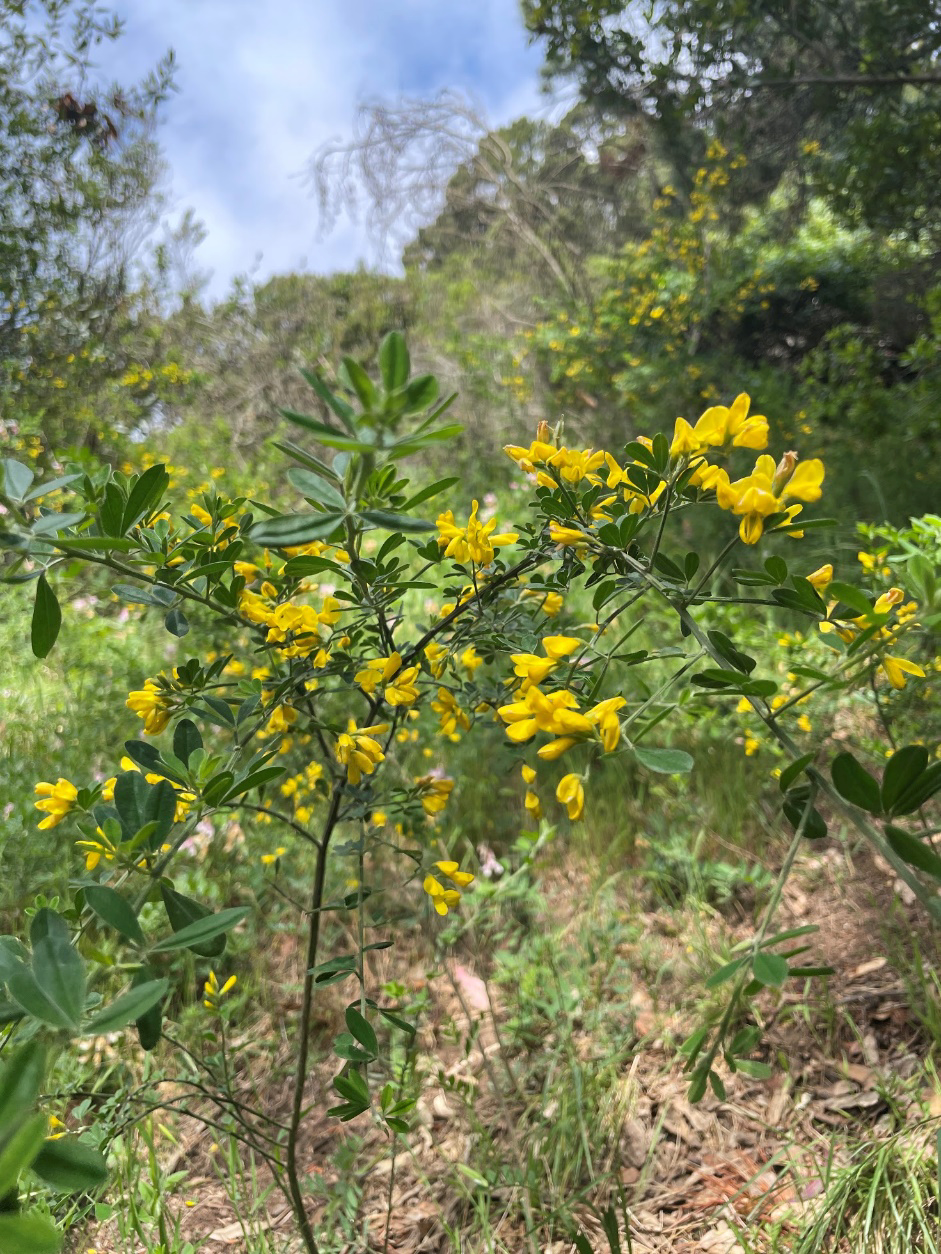Hiking Panoramic Ridge in the East Bay
- Sutro Stewards

- Jul 30, 2021
- 3 min read
We are very excited to partner with Dolby Laboratories for a special Nature in your Neighborhood project for Dolby Cares Week. A time when Dolby brings art and science together to inspire the next generation of innovators, and address the most critical needs in their communities. Thank you for contribution to Sutro Stewards!
By: Niall Battson
I enjoyed a great hike on Saturday with my dog, Koko, who is a very active Weimaraner and my family (wife and 2 kids) exploring for plants and flowers for our annual Dolby Cares event.


We had been treated to a wonderful education from Sutro Stewards regarding invasive plant species and the tools we can use to learn more about the plant life and flowers we see in our neighborhoods. So I wanted to put my new skills and the iNaturalist app to work.
Along the trail we found a lot of blooming flowers and here are a few we did some deeper research on.
Flaxleaf Pimpernel (Anagallis monelli)

We ran into this pretty flower on the East West fire trail overlooking the stunning bay area views. Anagallis Monelli, or more commonly know as Flaxleaf Pimpernel, is a forb/herb (a forb/herb is a non-woody plant that is not a grass) of the genus Anagallis. Its duration is perennial which means it will grow year after year. Anagallis Monelli or Flaxleaf Pimpernel's floral region is North America US Lower 48, specifically in the states of California and Virginia. However, according to Calflora this is NOT a native California plant. Which is a bit of a shame, as we quite liked it.
Summer Lupine (Lupinus chamissonis)

We had more luck with another colorful plant we ran into further along the trail. Lupinus formosus, the summer lupine, is a member of the lupine genus Lupinus in the Fabaceae family. It is native to California (yeah). Lupinus formosus has been cited as a poisonous plant according to Calscape. Although it is not endangered it faces eradication in some areas at the hands of cattle farmers as it has been implicated in crooked calf disease. There were plenty on our hike though. You can see a pic of them on the trail below. This lupine, along with five others, is poisonous from the time it starts growth in the spring until the seed pods shatter in late summer or early fall. However, the younger the plant the more toxic it is.

French Broom (Genista monspessulana)

The most abundant plant on our hike was the French Broom. Which while rather pretty, turns out to be invasive as well! Genista monspessulana, commonly known as French broom or Cape broom (Australia), is woody leguminous perennial shrub. The yellow-flowering bush is native to the Mediterranean region. Its reproductive vigour and preference for Mediterranean climates make it a very successful species in California and the Pacific Northwest, where it is considered a severe noxious weed. French broom currently occupies approximately 100,000 acres in California.
It displaces native plant and forage species, and makes reforestation difficult. It is a strong competitor and can dominate a plant community, forming dense monospecific stands. In an experiment in New Zealand French broom had a higher growth rate than any other broom species found in California, reaching an average height of more than 4.5 feet (141 cm) in two growing seasons. Since it can grow more rapidly than most trees used in forestry, it shades out tree seedlings in areas that are revegetated after harvest.

G. monspessulana grows to 1–2.5 metres (3 ft 3 in–8 ft 2 in) tall, with slender green branches. The stems are not ridged or green. The leaves are evergreen, trifoliate with three narrow obovate leaflets, 1–2 centimetres (0.39–0.79 in) long. The flowers are yellow, grouped 3-9 together in short racemes. Like other legumes, it develops its seeds within a pod.


